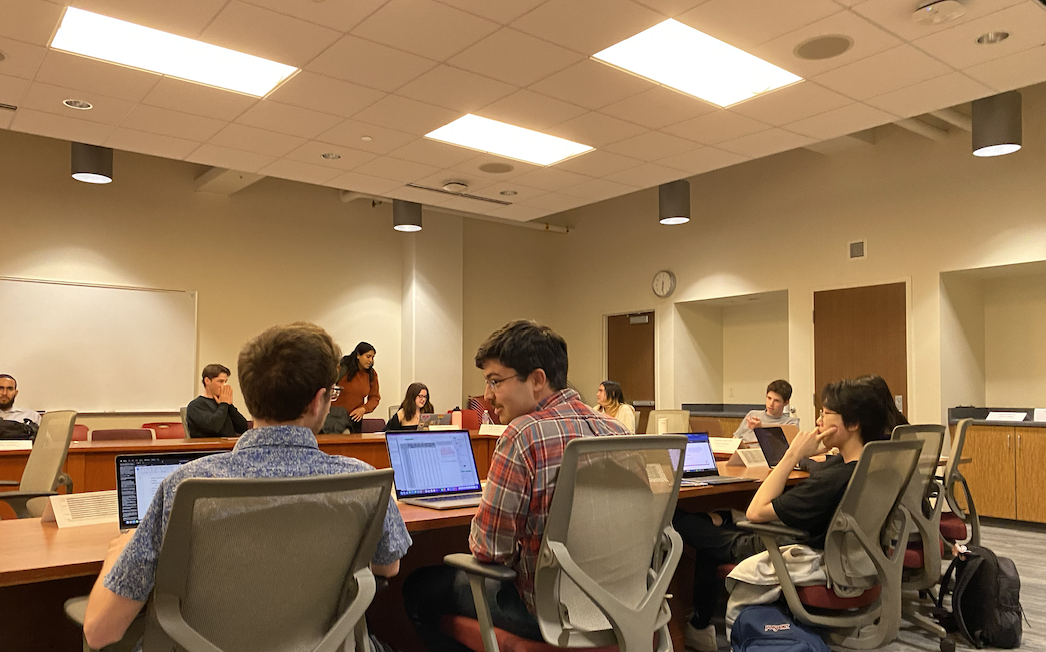The current debate over a City Council ordinance that would eliminate smoking from a significant number of downtown bars has been grabbing headlines for the past few months. Open any newspaper these days, and you’re bound to read about the clash between anti-smoking activists and bar owners over the right to light up.
What these news stories probably will not tell you is that the fight over the proposed ban is only the latest contest in what has been a drawn-out war. In fact, the smoke-ban battle was already being waged more than 10 years ago, as anti-smoking activists and smokers’ rights advocates argued over campus and city smoking bans.
In the 1991 controversy, anti-smoking activists carried the day. The University of Wisconsin became the first Big Ten school to pass large-scale smoking regulations. The policy banned smoking in all university buildings, including faculty offices. The only exceptions included designated areas in both student unions and individual dorm rooms where all roommates consented.
The university later reviewed the policy, and both unions went smoke-free.
Before the policy was implemented, smoking had been allowed in all but 18 UW-Madison buildings.
Madison mayor and UW-Madison graduate Sue Bauman remembers that, as unlikely as it may seem today, professors and students used to regularly smoke in campus buildings.
“When I was an undergrad, you had profs smoking,” Bauman said. “You weren’t sure if they were going to smoke the cigarette or the chalk.”
Although former Chancellor Donna E. Shalala announced the new regulations at a Jan. 22 press conference, they did not take effect until April 8. During the interim period, the university sponsored free smoking-cessation classes to encourage staff and students to stop smoking.
Administrators said the regulations were the result of increased knowledge about the effects of secondhand smoke.
“Results from recent research indicate the dangers of secondhand smoke,” wrote Michael Williamson, former associate to the chancellor, in a 1991 New York Times article. “The university has a responsibility to create a healthy environment.”
However, even as early as 1991, the smoking-regulation debate was framed as an issue of smokers’ rights vs. public health, and not everyone agreed with Shalala and the administration.
While the Union Council, Academic Staff Executive Committee and Faculty Senate voted in favor of the policy, support from UW’s student government, the Wisconsin Student Association, was split.
A petition created by the founder of the Smokers’ Rights Organization, Ken Hasker, who was a UW-Madison junior at the time, garnered over 1,000 signatures opposing the policy.
“A lot of smokers are paying the tuition here and will not be allowed to use university facilities,” he told the Times.
On the other hand, Ann Schensky, the training and program coordinator for at the Center for Tobacco Research and Intervention, a group that worked with campus organizations to push for the ban, said the regulations were necessary and a matter of public health.
“The most important thing to remember is that it’s a public-health issue,” she said. “It’s not a rights issue. It’s for the good of the people.”
Chancellor John Wiley, who was dean of the graduate school at the time the policy was enacted and is a smoker himself, agreed it was fair.
“I thought the bans on smoking indoors, especially in classrooms or other places where students and staff had little or no choice but to be present and no alternatives for escaping, were reasonable — overdue, in fact,” he said. “They were no particular inconvenience to me.”
Former Union Director Ted Crabb said the smoking ban was effective in part because it was part of a larger social movement.
“We didn’t get any complaints … it was really amazing,” he said. “There was a wave that was happening … right then that was declaring places nonsmoking. There was a recognition by students that times had changed.”
Crabb said although people had often smoked at the unions prior to the ban, there were virtually no problems with enforcing it, partially because it went into effect right before summer semester.
“By the time students came back in the fall, [the ban] had already been in place for three months,” he said.
However, Ald. Mike Verveer, District 4, who was speaker of the UW Student Senate at the time, said the regulations hurt the popularity of the Rathskellar.
“When smoking was still in the Rathskellar, it was much more popular than it is today,” he said.
In 1996, the university followed up its earlier policy by completely banning smoking in residence halls.
University Housing director Paul Evans told the Wisconsin State Journal in 1996 that student smoking trends played a crucial role in causing the university to switch to completely smoke-free dorms.
“It’s getting harder to find a place for a smoker who needs a yearlong dorm assignment,” Evans said. “There are more students who don’t want to live in a smoking room.”
City regulation followed the same general path as campus regulation. Over the years, and with little significant resistance, the city banned smoking in many public places, including childcare facilities, retail stores and common areas of many apartment buildings.
According to Verveer, one reason these ordinances did not create controversy is that they are difficult for the city to enforce.
“One reason why the workplace ban is controversial is that a lot of people ignore it,” he said.
However, conflict did flare up in 1992 when a city ordinance was passed that prohibited smoking in restaurants, defined as establishments obtaining less than 33 percent of revenue from alcohol sales.
Restaurants could get around the ordinance, though, by creating specially ventilated, enclosed bar areas designated for smoking.
At the time, many restaurant owners opposed the ban, assuming it would make them lose money. However, since the regulation’s enactment these fears have proved to be largely unfounded.
According to a 1996 study by the Tobacco-Free Wisconsin Coalition, while the regulation affected 83 percent of Dane County restaurants, these same restaurants accounted for 90 percent of the county’s restaurant revenue. The coalition found the overall revenue of smoke-free restaurants increased 3 percent between 1992 and 1996.
Currently, the City Council is considering an ordinance that would ban smoking from establishments receiving up to 50 percent of their revenue from alcohol sales, changing the definition of a restaurant. It would also ban smoking in the separately ventilated smoking rooms created by the 1992 ordinance. Alds. Jean MacCubbin, District 11, Gary Poulson, District 10, and Paul Van Rooy, District 18, drafted the proposed ordinance. The City Council will vote on the ordinance Nov. 19.
Once again, both anti-smoking and smokers’ rights activists are up in arms.
Poulson said the proposed ordinance is imperative to protect both restaurant workers and patrons from secondhand smoke.
“We’re trying to expand the number of places where people can partake in food and beverage without smoke,” he said.
On the other hand, tavern owners argue the ban will drive away customers and say the patrons are well aware when going to a bar that they will encounter a smoky atmosphere.
What will be the next battle in the fight between smokers and nonsmokers?
Poulson said he would like to see all public places become smoke-free.
“The trend in my mind is pretty much where all areas where the public congregates will become smoke-free,” he said.
Donald Downs, a UW political science and law professor, said anti-smoking activists will not stop until there is a complete smoking prohibition.
“It’s clear the anti-smoking [activists] will not stop until prohibition,” he said.
Downs supported the campus smoking regulations but said the City Council’s proposed ban goes too far. While he said it is important to strike a balance between the rights of smokers and nonsmokers skewed toward the interests of nonsmokers, Downs said the proposed legislation is paternalistic and moralistic. He said the ordinance is designed more to punish smokers than to promote common courtesy.
He added, “Smoking and bars have gone together since time immemorial.”
Mayor Bauman, who both supported the 1992 ordinance and backs the current proposal, said all anti-smoking advocates are not necessarily pushing for prohibition. She instead argued that the new legislation has been shaped by an increased awareness about the dangers of secondhand smoke.
“My position hasn’t changed over time,” she said. “What we knew about smoking in ’92, we had every reason to believe ventilated rooms worked. They don’t.”
While only time will tell how far smoking regulations will go in Madison, the Nov. 19 City Council vote on the proposed regulations will be a good indicator.










